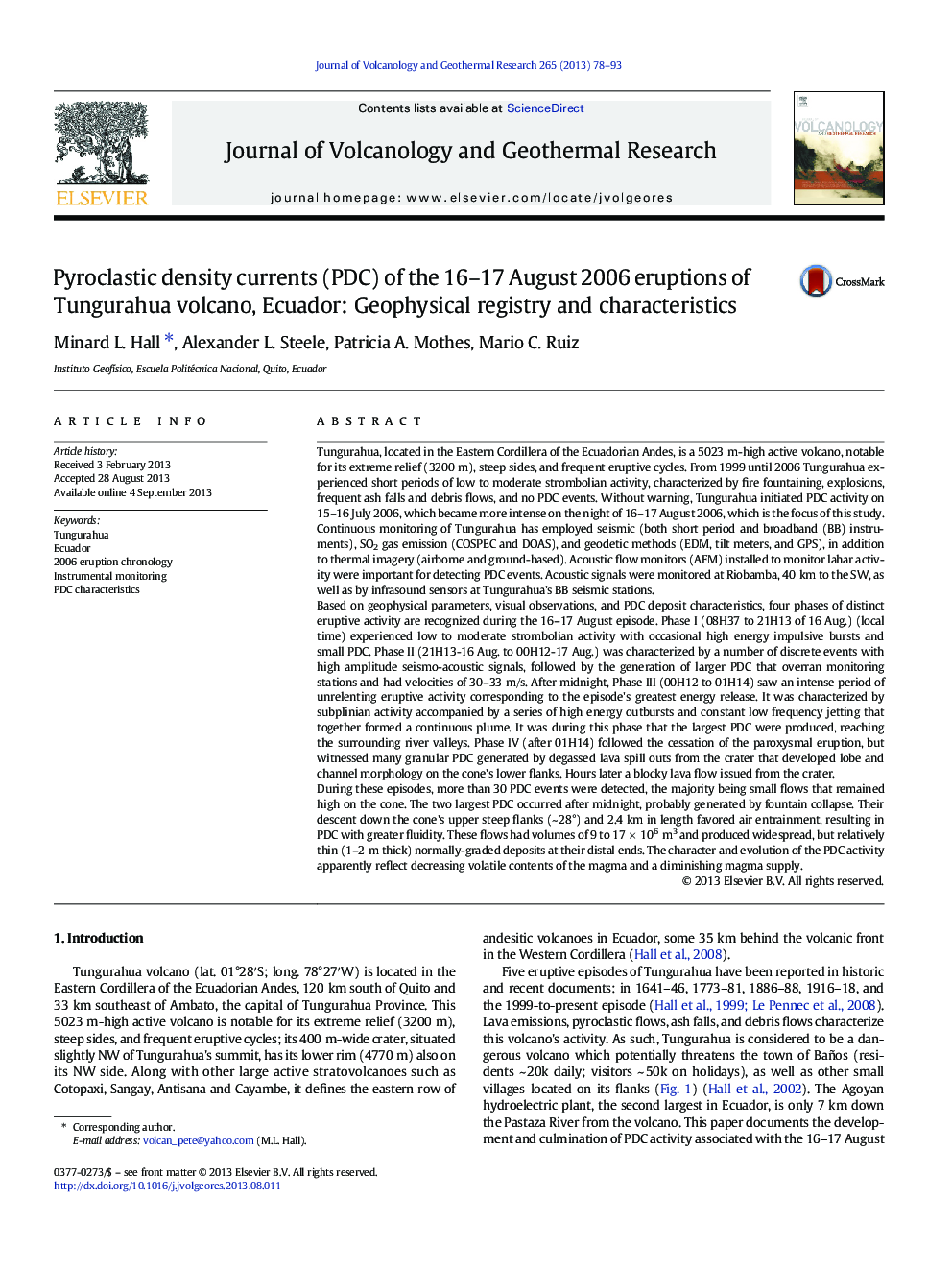| Article ID | Journal | Published Year | Pages | File Type |
|---|---|---|---|---|
| 4713319 | Journal of Volcanology and Geothermal Research | 2013 | 16 Pages |
•The August 2006 eruption of Tungurahua volcano lasted ≤ 24 h and was closely monitored by seismic, acoustic, and thermal registry.•Its increasing weak to moderate strombolian activity climaxed with a highly energetic subplinian phase with vulcanian outbursts.•Small to medium PDCs were generated; the 3 larger PDCs were monitored, their deposits studied; velocities varied from 30 to 4 m/s.•PDC fluidity, velocity, deposit morphology was strongly influenced by air entrainment.
Tungurahua, located in the Eastern Cordillera of the Ecuadorian Andes, is a 5023 m-high active volcano, notable for its extreme relief (3200 m), steep sides, and frequent eruptive cycles. From 1999 until 2006 Tungurahua experienced short periods of low to moderate strombolian activity, characterized by fire fountaining, explosions, frequent ash falls and debris flows, and no PDC events. Without warning, Tungurahua initiated PDC activity on 15–16 July 2006, which became more intense on the night of 16–17 August 2006, which is the focus of this study.Continuous monitoring of Tungurahua has employed seismic (both short period and broadband (BB) instruments), SO2 gas emission (COSPEC and DOAS), and geodetic methods (EDM, tilt meters, and GPS), in addition to thermal imagery (airborne and ground-based). Acoustic flow monitors (AFM) installed to monitor lahar activity were important for detecting PDC events. Acoustic signals were monitored at Riobamba, 40 km to the SW, as well as by infrasound sensors at Tungurahua's BB seismic stations.Based on geophysical parameters, visual observations, and PDC deposit characteristics, four phases of distinct eruptive activity are recognized during the 16–17 August episode. Phase I (08H37 to 21H13 of 16 Aug.) (local time) experienced low to moderate strombolian activity with occasional high energy impulsive bursts and small PDC. Phase II (21H13-16 Aug. to 00H12-17 Aug.) was characterized by a number of discrete events with high amplitude seismo-acoustic signals, followed by the generation of larger PDC that overran monitoring stations and had velocities of 30–33 m/s. After midnight, Phase III (00H12 to 01H14) saw an intense period of unrelenting eruptive activity corresponding to the episode's greatest energy release. It was characterized by subplinian activity accompanied by a series of high energy outbursts and constant low frequency jetting that together formed a continuous plume. It was during this phase that the largest PDC were produced, reaching the surrounding river valleys. Phase IV (after 01H14) followed the cessation of the paroxysmal eruption, but witnessed many granular PDC generated by degassed lava spill outs from the crater that developed lobe and channel morphology on the cone's lower flanks. Hours later a blocky lava flow issued from the crater.During these episodes, more than 30 PDC events were detected, the majority being small flows that remained high on the cone. The two largest PDC occurred after midnight, probably generated by fountain collapse. Their descent down the cone's upper steep flanks (~ 28°) and 2.4 km in length favored air entrainment, resulting in PDC with greater fluidity. These flows had volumes of 9 to 17 × 106 m3 and produced widespread, but relatively thin (1–2 m thick) normally-graded deposits at their distal ends. The character and evolution of the PDC activity apparently reflect decreasing volatile contents of the magma and a diminishing magma supply.
